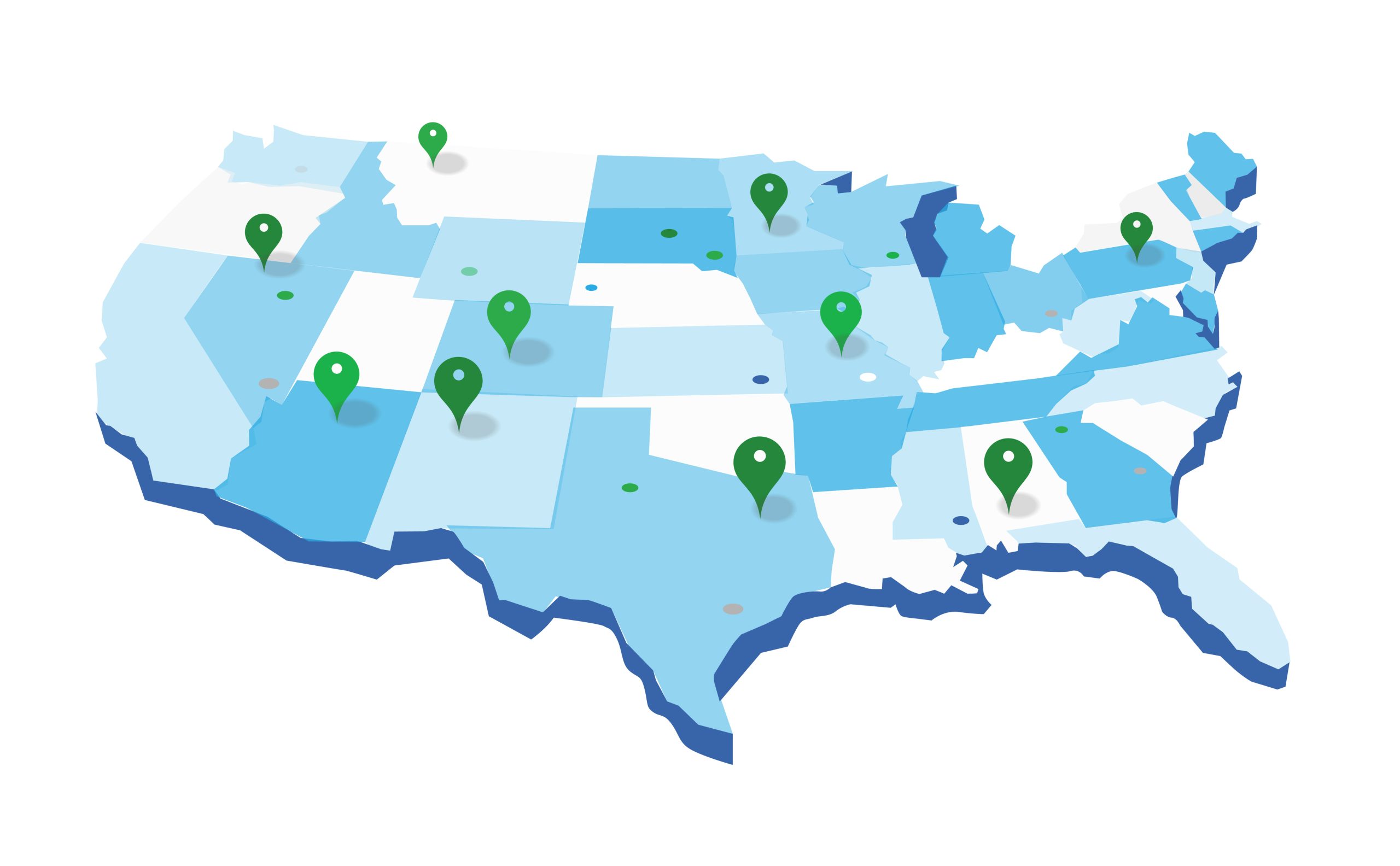State nexus is an integral factor in most companies' business life cycles. As businesses grow, sales may cross state lines, employees may work out of state, and vendor relationships may expand nationwide. When these circumstances arise, businesses must consider the tax impacts and compliance requirements for the states in which they have established nexus. Each state follows its own laws, and businesses must determine how to apportion their activities to each state on their income tax filings.State laws base their apportionment rules on the following factors: sales, property, and payroll. Each factor is calculated using a simple formula:
- Sales factor: (sales made in the state) / (total sales for the tax year)
- Property factor: (property, including buildings and equipment, within the state) / (total property owned by the business during the tax year)
- Payroll factor: (wages for employees in the state, whether remote workers or employees who traveled to that state) / (gross payroll for all employees for the tax year)
The two most common apportionment methods either take the average of all three formulas or use the sales formula exclusively (single-factor method). If the standard method does not accurately represent a business's activity in a state, most states allow businesses to request an alternative apportionment method, which varies depending on the state. For example, if a business manufactures most of its products in state A but sells them primarily in state B, and state A uses the three-factor formula, the manufacturing activities (buildings, equipment, and employees) would skew the apportionment percentage, unfairly allocating more tax liability to state A. In such a case, the company might benefit from requesting an alternative method, such as the single sales factor, for state A to better represent its income tax liability.
When determining what income is subject to apportionment, businesses need to differentiate between business and nonbusiness income. Generally, business income is apportioned among states using the apportionment methods mentioned earlier. Business income arises from the ordinary activities of the business. Examples include:
- The sale of goods or services
- Interest income from business operations
- Rental income from business properties
- Income derived from business investments
In contrast, nonbusiness income comes from activities not related to the regular course of business and is not apportioned using the standard methods. This type of income is typically passive in nature. Examples of nonbusiness income include:
- Dividends and interest from investments unrelated to the business's primary activities
- Sales of securities from investments unrelated to the business's primary activities
- Gains from the sale of unused land (i.e. held for investment, with no business use intended)
- Royalties from intellectual property (i.e. patents, copyrights unrelated to core business activities)
These nonbusiness activities are generally apportioned to the state where the asset is held (such as unused land) or to the company’s domiciled state (for passive investments).
Throughout the year, it's essential for businesses to establish internal processes to effectively monitor state activity, which can help streamline the apportionment process. Examples of best practices include ensuring customer locations are accurately recorded (both billing and shipping addresses), employees update HR when moving across states, and maintaining up-to-date equipment location records.When tax filing season arrives, keeping these considerations in mind is crucial for meeting state compliance requirements. If you have any questions regarding multi-state apportionment, please reach out to our office.





